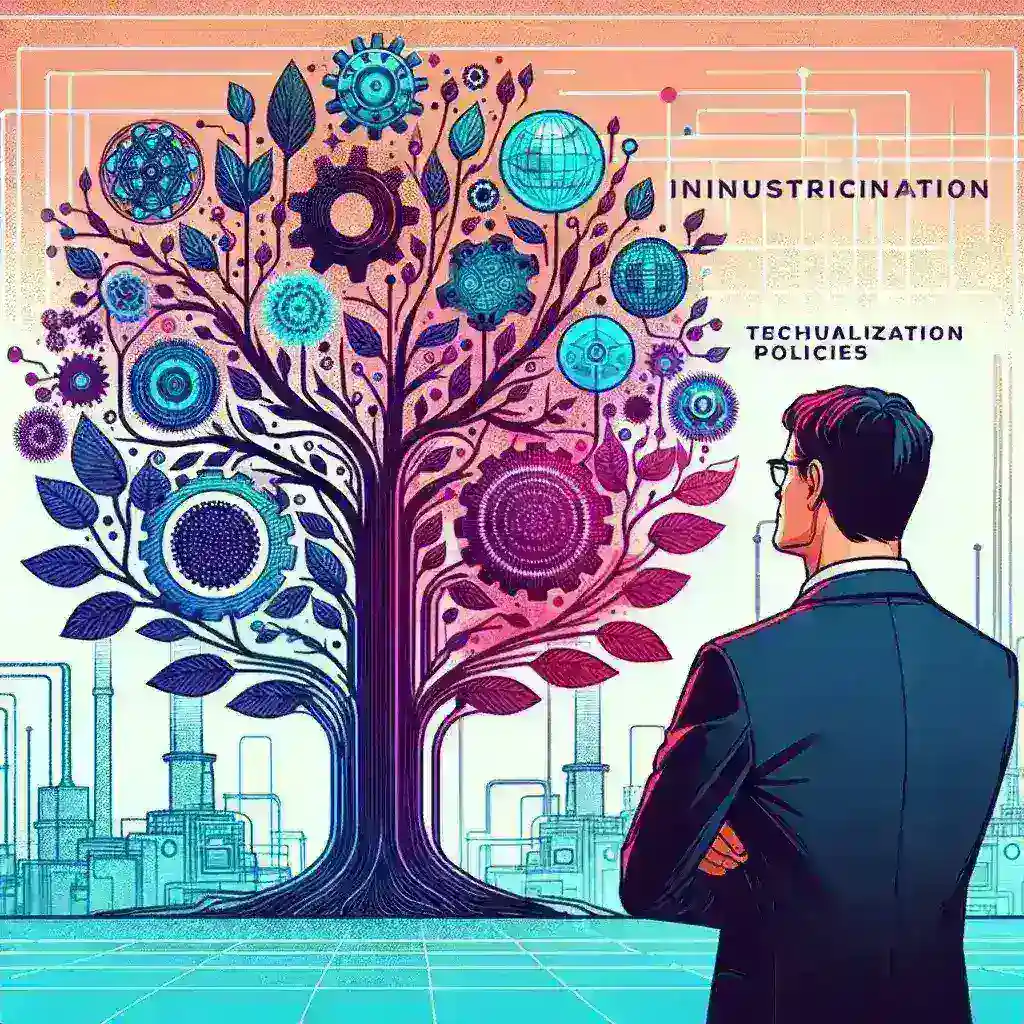
Nvidia CEO Jensen Huang Praises Trump’s Re-industrialization Policies as Visionary for Technology Growth
Nvidia CEO Jensen Huang Endorses Trump’s Vision for American Tech Renaissance
In a significant endorsement from Silicon Valley, Nvidia CEO Jensen Huang has recently praised former President Donald Trump’s re-industrialization policies, describing them as “visionary” for the technology sector and particularly for companies like Nvidia that are at the forefront of artificial intelligence and semiconductor development. This endorsement comes at a time when the United States is actively seeking to revitalize its manufacturing base and secure technological supremacy in critical sectors.
Huang, whose company has seen extraordinary growth in recent years and has become one of the world’s most valuable corporations, emphasized that Trump’s focus on bringing manufacturing back to American soil could be transformative for the tech industry and the broader economy.
The Context: America’s Technological Competition with China
To understand the significance of Huang’s comments, it’s essential to consider the current geopolitical landscape. The United States and China are engaged in an intense technological competition, particularly in areas such as artificial intelligence, quantum computing, and semiconductor manufacturing. This rivalry has been characterized by trade restrictions, investment controls, and a race to develop cutting-edge technologies that will define the future global economy.
Nvidia, as a leading developer of graphics processing units (GPUs) and AI accelerators, stands at the epicenter of this competition. The company’s chips power much of today’s AI revolution, from data centers to autonomous vehicles, making Huang’s perspective on industrial policy particularly relevant.
The Semiconductor Supply Chain Vulnerability
The COVID-19 pandemic exposed critical vulnerabilities in global supply chains, particularly in the semiconductor industry. With much of the world’s advanced chip manufacturing concentrated in Taiwan and South Korea, the United States found itself dependent on foreign sources for components essential to everything from smartphones to military equipment.
This reality has prompted bipartisan support for policies aimed at reshoring semiconductor manufacturing, culminating in the CHIPS and Science Act of 2022. However, Huang’s comments suggest that Trump’s more comprehensive re-industrialization vision could go beyond current efforts to rebuild America’s manufacturing capacity.
Key Elements of Trump’s Re-industrialization Policies Highlighted by Huang
While Huang did not elaborate on all aspects of Trump’s industrial policies, several key elements appear to have resonated with the tech executive:
- Tariffs and Trade Policies: Trump’s use of tariffs as a tool to encourage domestic manufacturing and protect American industries from what he viewed as unfair competition.
- Tax Incentives: Reduced corporate tax rates and targeted incentives designed to make domestic manufacturing more financially attractive.
- Regulatory Reform: Streamlining regulations to accelerate factory construction and technological deployment.
- Energy Independence: Policies promoting abundant, low-cost energy as a foundation for manufacturing competitiveness.
- Strategic Investment: Directed investment in critical technologies and infrastructure.
For a company like Nvidia, which requires massive computational resources and manufacturing capabilities to maintain its technological edge, these policies could provide significant advantages in the global marketplace.
The Significance of Huang’s Endorsement
Jensen Huang’s support for Trump’s industrial vision is noteworthy for several reasons. As the leader of one of the world’s most innovative and valuable technology companies, Huang’s perspective carries substantial weight in both business and policy circles. Additionally, Silicon Valley executives have historically been more aligned with Democratic policies, making Huang’s positive assessment of Trump’s approach particularly significant.
This endorsement may signal a broader shift in how technology leaders view industrial policy, with growing recognition that robust domestic manufacturing capabilities are essential for long-term innovation and economic security.
Nvidia’s Stakes in American Manufacturing Renaissance
Nvidia’s business model has traditionally focused on chip design rather than manufacturing. The company creates sophisticated GPU architectures that are then fabricated by contract manufacturers like Taiwan Semiconductor Manufacturing Company (TSMC). However, the geopolitical risks associated with this arrangement have become increasingly apparent.
Potential Benefits for Nvidia
A robust re-industrialization policy could benefit Nvidia in several ways:
- Supply Chain Security: Reduced dependence on foreign manufacturers would minimize disruption risks for Nvidia’s products.
- Intellectual Property Protection: Domestic manufacturing could provide stronger safeguards for Nvidia’s valuable intellectual property.
- Accelerated Innovation Cycles: Closer proximity between design and manufacturing facilities could speed up product development and iteration.
- Government Partnerships: Increased domestic manufacturing could lead to expanded opportunities for government contracts and research partnerships.
- Market Expansion: Policies that strengthen the overall tech ecosystem would likely increase demand for Nvidia’s AI and computing solutions.
These advantages explain why Huang might view Trump’s industrial vision as particularly aligned with Nvidia’s long-term strategic interests.
The Broader Tech Industry Response
While Huang has been vocal in his support, reactions across the broader technology sector to Trump’s re-industrialization agenda have been mixed. Some executives share Huang’s enthusiasm for policies that could strengthen domestic manufacturing, while others express concerns about potential disruptions to established global supply chains and collaborative international research networks.
The tech industry’s response largely depends on individual companies’ business models, international exposure, and specific technological domains. Companies heavily dependent on hardware manufacturing may view re-industrialization more favorably than those focused primarily on software or services.
Historical Perspective: Tech Manufacturing in America
To fully appreciate the significance of this potential shift, it’s worth considering the historical trajectory of technology manufacturing in the United States. In the mid-20th century, America dominated global electronics manufacturing, with companies like IBM, Texas Instruments, and Intel producing cutting-edge technology domestically.
However, beginning in the 1980s and accelerating in the 1990s and 2000s, much of this manufacturing capacity moved overseas in search of lower costs and proximity to growing Asian markets. This shift created the current situation where American companies design sophisticated technology products that are largely manufactured elsewhere.
Trump’s re-industrialization policies, as endorsed by Huang, represent a potential reversal of this decades-long trend—a prospect that carries both opportunities and challenges for the technology sector.
The AI Revolution and Manufacturing Imperatives
Nvidia’s particular interest in manufacturing policy is deeply connected to the ongoing artificial intelligence revolution. As AI systems become more sophisticated and pervasive, the demand for specialized computing hardware continues to grow exponentially.
The Strategic Importance of AI Chips
AI accelerators and advanced GPUs are not merely commercial products—they represent strategic assets in the global competition for technological leadership. Countries with domestic capacity to design and manufacture these chips gain significant advantages in developing and deploying AI systems across military, economic, and social domains.
Huang’s endorsement of Trump’s policies suggests a recognition that maintaining leadership in AI requires not just innovative designs but also secure, resilient manufacturing capabilities. This perspective aligns with growing bipartisan consensus about the strategic importance of domestic semiconductor production.
Economic Implications of Tech Re-industrialization
Beyond the strategic dimensions, the economic implications of a technology-focused re-industrialization effort would be substantial. Modern semiconductor fabrication facilities (“fabs”) represent some of the most capital-intensive manufacturing operations in existence, with leading-edge facilities costing upwards of $20 billion each.
Job Creation and Economic Multipliers
While modern chip factories are highly automated, they nevertheless create significant employment opportunities, particularly for skilled technical workers. Moreover, semiconductor manufacturing clusters tend to develop rich ecosystems of suppliers, research institutions, and complementary businesses that multiply the economic impact.
From Nvidia’s perspective, the growth of such ecosystems in the United States could create new opportunities for collaboration, talent acquisition, and product development that might not be possible in a more geographically dispersed model.
Challenges and Potential Drawbacks
Despite Huang’s enthusiasm, re-industrialization faces significant challenges that any comprehensive policy must address:
- Cost Differentials: Manufacturing in the United States remains more expensive than in many alternative locations, particularly for labor-intensive processes.
- Talent Pipeline: Building and operating advanced manufacturing facilities requires specialized skills that are currently in short supply in the American workforce.
- Infrastructure Requirements: Semiconductor manufacturing requires robust infrastructure, including reliable power supplies, water resources, and transportation networks.
- International Relationships: Policies that prioritize domestic manufacturing could create tensions with international partners and potentially lead to retaliatory measures.
- Capital Requirements: The massive investments needed for cutting-edge manufacturing facilities may require significant public-private partnerships or incentives.
Any successful re-industrialization policy would need to address these challenges while maintaining the innovation dynamics that have made American technology companies like Nvidia global leaders.
Environmental Considerations in Tech Manufacturing
Modern technology manufacturing, particularly semiconductor fabrication, involves significant environmental considerations. These facilities consume large quantities of water, chemicals, and energy, raising important questions about sustainability.
A comprehensive re-industrialization policy would need to incorporate advanced environmental technologies and practices to ensure that domestic manufacturing expansion does not come at an unacceptable environmental cost. This represents both a challenge and an opportunity to develop more sustainable manufacturing approaches.
For companies like Nvidia, which have made commitments to environmental sustainability, ensuring that manufacturing partners maintain high environmental standards is increasingly important to corporate reputation and regulatory compliance.
The Global Context: International Responses
America’s potential manufacturing renaissance does not exist in isolation. Other major economies, including China, the European Union, Japan, and South Korea, have all announced ambitious plans to strengthen their semiconductor and advanced technology manufacturing capabilities.
This global context creates a competitive dynamic where multiple nations are simultaneously investing in similar capabilities. For Nvidia and other technology companies, this environment creates both opportunities (multiple potential manufacturing partners) and risks (intensified competition and potential overcapacity).
The Future of Global Technology Supply Chains
Rather than a complete reshoring of all technology manufacturing, the more likely outcome is a reconfiguration of global supply chains to prioritize security and resilience alongside efficiency. This might involve “friend-shoring” (concentrating production among allied nations) rather than complete domestic production of all components.
Huang’s endorsement of Trump’s policies should be understood in this nuanced context—not as an advocacy for complete technological isolation but rather for a more balanced approach that ensures America maintains essential capabilities while continuing to participate in global innovation networks.
Policy Specifics: What Would Effective Re-industrialization Entail?
While Huang praised the visionary nature of Trump’s approach, implementing effective re-industrialization policies would require specific, targeted measures across multiple domains:
- Education and Workforce Development: Expanding STEM education and technical training programs to build the skilled workforce needed for advanced manufacturing.
- Research and Development Funding: Sustained investment in basic and applied research related to manufacturing technologies and materials.
- Tax Policies: Structures that incentivize capital investment in domestic manufacturing facilities and equipment.
- Regulatory Frameworks: Streamlined permitting and compliance processes that maintain necessary protections while reducing unnecessary delays.
- Infrastructure Investment: Modernizing the physical and digital infrastructure needed to support advanced manufacturing operations.
- Strategic Technology Protection: Carefully calibrated export controls and investment screening mechanisms to protect critical technologies.
The effectiveness of re-industrialization would depend on how well these various policy elements work together to create a favorable environment for companies like Nvidia to participate in domestic manufacturing ecosystems.
Nvidia’s Future in a Re-industrialized America
Looking ahead, Huang’s endorsement raises interesting questions about Nvidia’s own manufacturing strategy. While the company has historically relied on contract manufacturers, could a transformed domestic manufacturing landscape lead Nvidia to consider more direct involvement in fabrication?
Such a shift would represent a significant strategic change for the company but might become increasingly attractive if the right combination of policies, incentives, and technological developments emerges. Alternatively, Nvidia might maintain its focus on design while developing deeper partnerships with domestic contract manufacturers.
Either approach would represent a response to the changing geopolitical and technological landscape that Huang appears to believe Trump’s policies could help shape in a favorable direction.
Conclusion: Technology Leadership in a New Industrial Era
Jensen Huang’s praise for Trump’s re-industrialization vision highlights the growing recognition among technology leaders that manufacturing capabilities and innovation capacity are deeply intertwined. For the United States to maintain leadership in critical technologies like artificial intelligence, quantum computing, and advanced semiconductors, it must rebuild certain manufacturing capabilities that have atrophied in recent decades.
The endorsement from one of the world’s most successful technology executives suggests that industrial policy has moved from the periphery to the center of discussions about America’s technological future. Whether this represents a lasting shift in Silicon Valley’s approach to government policy remains to be seen, but it certainly signals an important evolution in how technology leaders view the relationship between innovation, manufacturing, and national competitive advantage.
For Nvidia specifically, a successful re-industrialization effort could provide the secure, resilient supply chains and innovation ecosystem needed to sustain its remarkable growth trajectory. As artificial intelligence continues to transform industries and societies worldwide, ensuring that the physical infrastructure underlying this revolution remains robust and accessible becomes increasingly critical.
In this context, Huang’s endorsement may be not just a political statement but a strategic signal about how one of the world’s most forward-thinking technology leaders sees the future unfolding—a future where America’s technological leadership is underpinned by renewed industrial capabilities and manufacturing excellence.




Leave a Comment